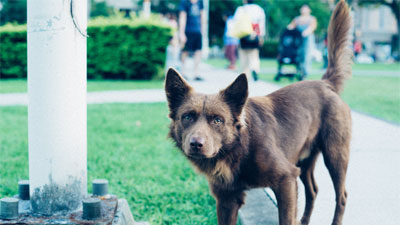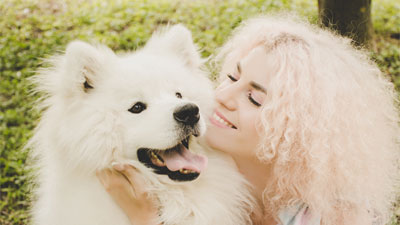- Size
- Smallest
- Small
- Small to Medium
- Medium
- Large
- Giant
- Characteristics
- Smartest
- Hypoallergenic
- Fluffy
- Best Guard
- Best Family
- Best for Kids
- Low Shedding
- Healthiest
- Police Dogs
- Most Calm
- Quietest
- Color
- White
- Black
- Grey
- Brown
- Blue
- Red
- Coat
- Hairless
- Short
- Long
- Origin
- Japan
- China
- Australia
- Germany
- Italy
- United States
- France
- Group
- Hound
- Terrier
- Herding
- Toy
- Working
- Sporting
Why Do Dogs Yawn? and The Meaning Behind

Photo by charlesdeluvio on Unsplash
Dogs, our loyal companions, are fascinating creatures that express themselves in ways beyond verbal communication. One such behavior that often captures our attention is yawning. While we may associate yawning with tiredness or boredom in humans, understanding what it means when your dog yawns requires delving into the intricate language of canine communication.
In this comprehensive exploration, we will uncover the various dimensions of dog yawning, from the physiological to the emotional, providing insights that can deepen the bond between pet owners and their furry friends.
Understanding Yawning in Dogs
Before we embark on deciphering the canine yawn, it's important to recognize that yawning is a universal behavior observed not only in dogs but also in various vertebrates, spanning primates, horses, penguins, fish, cats, and even snakes. This universality prompts us to question the underlying functions and meanings that yawning holds across different species.
1. Physiological Reasons for Dog Yawning
Contrary to the common assumption that dogs yawn solely due to tiredness or boredom, scientific research suggests a more nuanced perspective. Physiologically, yawning in dogs might be comparable to the stimulative effects of caffeine in humans, potentially playing a role in the stimulation of the nervous system. Moreover, it is proposed that yawning could act as a mechanism to cool down the brain when its temperature rises.
Extensive research by neuroscientist Robert Provine sheds light on the timing of yawns in various vertebrates, including dogs. Yawns often occur during transitional moments between different behavioral states, such as waking up, falling asleep, shifting from anxiety to calmness, or transitioning from boredom to alertness. This suggests a deeper connection between yawning and the dynamics of behavioral changes in dogs.
2. Emotional and Sociological Functions for Dog Yawning
Beyond the physiological realm, dog yawning has emotional and sociological dimensions. Norwegian behaviorist Turid Rugaas, renowned for her work in canine behavior, identifies yawning as a calming signal dogs use when stressed or uneasy. In situations such as entering a veterinary clinic, witnessing household quarrels, being restrained, hugged by a child, or being approached by a stranger, dogs may employ yawning as a means to self-soothe and communicate a desire for calmness.
Yawning, along with other calming signals, can serve as a communication tool within a dog's social group. For instance, a stressed dog may accompany yawning with additional signals like lip licking, tail tucking, or maintaining an averted gaze. Understanding these signals becomes crucial for interpreting a dog's emotional state accurately.
Recent studies conducted at the Ontario Veterinary College reveal intriguing insights into the social aspects of dog yawning. When owners were present during routine physical exams, dogs exhibited fewer vocalizations, lower body temperatures, and a higher rate of yawning. This suggests that yawning might serve as a social signal between dogs and their owners during potentially stressful situations, fostering communication and comfort.
3. Empathy and Contagious Yawning
One of the remarkable aspects of dog yawning is its contagious nature, akin to what is observed in humans, primates, and horses. Nick Dodman, a veterinary behaviorist and professor, suggests that dogs yawning in response to their owner's yawns could be indicative of empathy. Recent studies on contagious yawning demonstrate that dogs yawn more frequently when watching their owner yawn compared to watching an unfamiliar person yawn. This intriguing finding suggests a level of emotional closeness and awareness of their owners' feelings.
This notion aligns with the idea that dogs, far from being purely instinct-driven beings, possess a degree of self-awareness and an ability to empathize with the emotional states of those around them. The contagious nature of yawning in dogs becomes a compelling aspect of the intricate web of interspecies communication.
What Does It Mean When a Dog Yawns a Lot?
Understanding the frequency of yawning in dogs requires keen observation of their overall behavior and body language. If a dog yawns frequently, especially when accompanied by other stress indicators such as a tucked tail, ears back, avoidance, cowering, lip licking, or wide eyes, it suggests the dog is feeling fearful, uncertain, anxious, or stressed about a particular interaction or situation.
Illustrator and author Lili Chin, in her book "Doggie Language," emphasizes the distinction between a stressed yawn and a relaxed yawn. A stressed dog may yawn to release tension, avoid conflict, signal the need for a break, or communicate unease. Recognizing these signs becomes essential for responsible pet ownership.
How Can You Help a Dog That Keeps Yawning?
If you notice your dog yawning frequently, especially in stressful situations, there are several strategies to help alleviate their unease:
Avoid Stressful Situations: Prevent exposing your dog to situations that cause stress or fear. Leaving your dog at home during loud or crowded events, like parades or fireworks, can reduce their anxiety.
Create a Safe Space: Provide a quiet room with background noise and engaging puzzles, treats, and toys. This gives your dog a designated safe haven where they can retreat when feeling overwhelmed.
Learn Your Dog's Signs: Familiarize yourself with your dog's signs of fear, anxiety, and stress. Moving your dog away from scary stimuli, asking strangers to stop their approach, and finding quieter locations can help them feel safer.
Gradual Desensitization: If fear and stress are persistent in your dog's life, consider gradual desensitization through science-based behavior modification. This involves creating positive associations, teaching and rewarding new behaviors, and, in some cases, utilizing anxiety management techniques. Consulting with a veterinary behaviorist or a professional trainer can guide you through this process.
Conclusion
In conclusion, dog yawning transcends the simplistic notion of sleepiness or boredom and unveils a complex tapestry of physiological, emotional, and sociological functions. Owners, armed with a deeper understanding of canine communication, can interpret their dog's yawns as a form of expression, a tool for self-soothing, and a means of social interaction. Yawning becomes a powerful lens through which we glimpse into the emotional lives of our canine companions, fostering empathy and strengthening the unique bond between humans and dogs.
You May Also Like
 Dog BehaviorWhat Do The Different Dog Tail Positions Mean?
Dog BehaviorWhat Do The Different Dog Tail Positions Mean? Dog BehaviorHow Do Dogs Show Their Emotions?
Dog BehaviorHow Do Dogs Show Their Emotions? Dog BehaviorThe 6 Common Dog Sounds and Their Meanings
Dog BehaviorThe 6 Common Dog Sounds and Their Meanings Help & AdviceWhat Is The Hardest Dog Trick?
Help & AdviceWhat Is The Hardest Dog Trick? Dog Training TipsHere are the 7 Most Important Dog Commands
Dog Training TipsHere are the 7 Most Important Dog Commands Dog Training Tips5 Easy Steps: How to Teach a Dog to Smile
Dog Training Tips5 Easy Steps: How to Teach a Dog to Smile